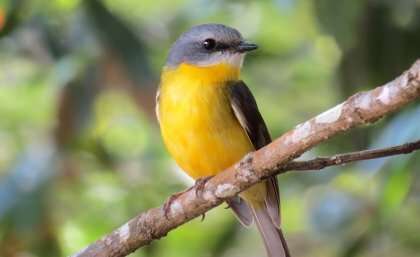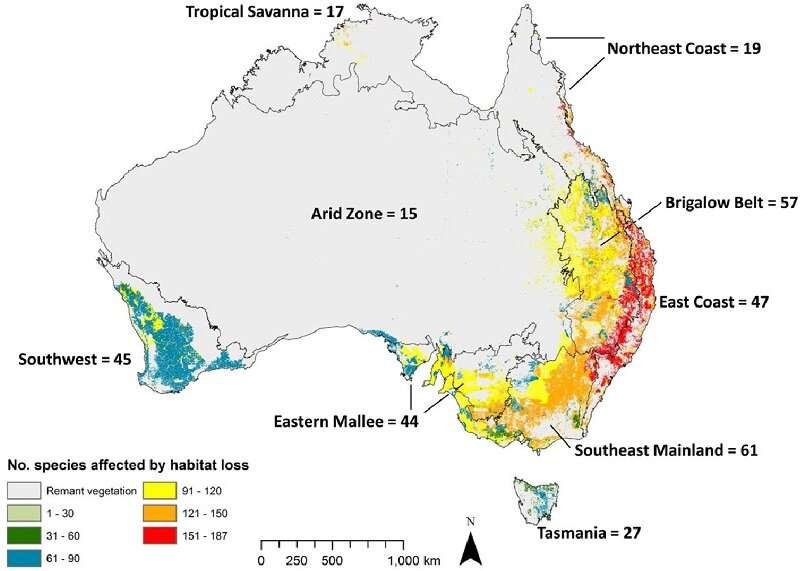Native birds in southeastern Australia worst affected by habitat loss

New research has found that habitat loss is a major concern for hundreds of Australian bird species, and southeastern Australia has been the worst affected.
The Threatened Species Recovery Hub study, featuring University of Queensland scientists, found that half of all native bird species have each lost almost two-thirds of their natural habitat across Victoria, parts of South Australia and New South Wales.
Lead researcher, Dr. Jeremy Simmonds, said the team looked at both threatened and non-threatened birds, including common species.
"While more attention is usually paid to threatened species, common species, like many of our familiar fairy-wrens, pigeons and honeyeaters, are crucially important," Dr. Simmonds said.
"Common species play a vital role in controlling insect pests and pollination and their decline through loss of habitat has implications for the health of ecosystems.
"Along with feral and invasive species, habitat destruction is among the greatest threats facing biodiversity in Australia, so it is important to understand how big the problem of habitat removal is: our research developed a method to do this, called the Loss Index.
"We looked at how the amount of habitat available for each of Australia's 447 different land bird species had changed since 1750.
"In places like Queensland's south-east and the Wet Tropics, each hectare of forest cleared can affect up to 180 different native bird species.

"Habitat loss has been particularly devastating for birds from south-east Australia; more than half of the 262 native birds in this region only have a small fraction of their natural habitat remaining in this part of the country.
"Northern Australia and Australia's arid zone have had the least habitat loss, as there has been much less vegetation clearing across that region.
"We also looked at different bird groups and found that Australia's parrot species are more impacted by habitat loss, compared with birds of prey, like eagles and owls."
Dr. Simmonds said the index provided a tool for conservation managers and planners to better understand how habitat loss affects all birds, and not just the endangered ones.
"It helps to show that every hectare of native vegetation that is removed chips away at remaining habitat for dozens and sometimes hundreds of species, including common species which typically do not receive conservation attention," he said.
"The quality of the remaining habitat is often reduced, due to weeds, grazing and changed fire patterns, such as more and hotter fires, and this can further reduce the number and type of birds that an area can support."
The Loss Index can also be applied to other species like mammals or plants.
The research was conducted by the Threatened Species Recovery Hub of the Australian Government's National Environmental Science Program, a national initiative to undertake science to help save Australia's threatened species.
The study, "A composite measure of habitat loss for entire assemblages of species," was published in Conservation Biology.
More information: Jeremy S. Simmonds et al. A composite measure of habitat loss for entire assemblages of species, Conservation Biology (2019). DOI: 10.1111/cobi.13331
The Threatened Species Recovery Hub study: www.nespthreatenedspecies.edu.au/
Journal information: Conservation Biology
Provided by University of Queensland





















